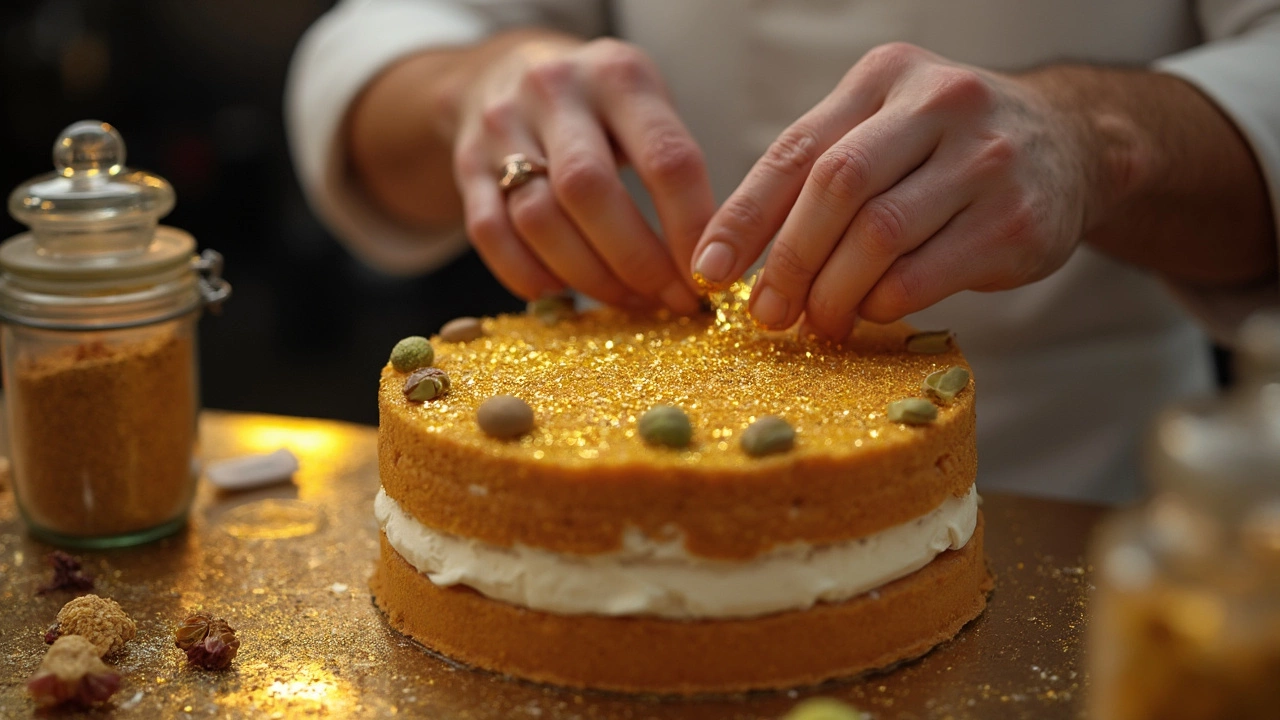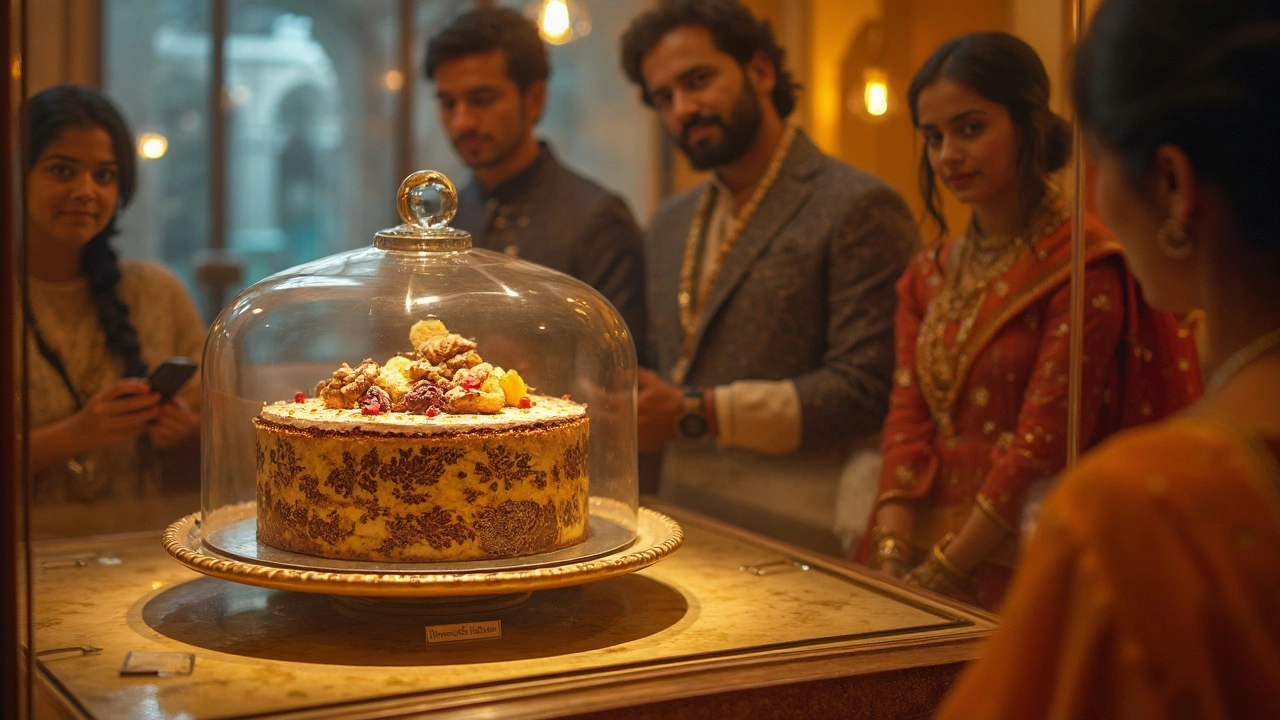Picture spending more on a slice of cake than on a brand-new car. Some desserts out there are so rare, most people haven’t even seen them outside documentaries—or maybe movies about billionaires. The rarest cake in the world isn’t just a wild food tale; it’s woven into luxury, history, secret recipes, and sometimes, flat-out absurdity. The most exclusive cakes aren’t always about price tags, though. Sometimes, scarcity comes from unusual ingredients, a lost baking tradition, or legends that swirl around the recipe. Either way, these cakes have stories you can almost taste. Ready for something sweeter than just another red velvet? This is the backstage pass into the rarest cake in the world and why only a handful have actually tried it.
The Story Behind the Most Coveted Cake on Earth
If anyone tells you there’s only one ‘rarest cake’ in the world, they’re stretching the truth. There’s always a debate—depends who’s baking, buying, or hunting for the bragging rights. But among all the contenders, the “Diamond Cake” by Tokyo pastry chef Nobue Ikara has set the bar in the past decade. This cake isn’t just a dessert; it’s a spectacle. It was famously priced at $1.65 million AUD (back in 2012), not because of secret spices, but because it was literally encrusted with diamonds. Yes, diamonds. The cake itself was a chocolate ganache, but the topping was 223 diamonds. It took six months to design, just two weeks to actually bake, and it sat behind glass nearly as securely as if it was the Mona Lisa. Most people just took photos—nobody was going to eat all those diamonds.
But let’s set aside cakes decked out in jewels and focus on rare cakes people actually dare to slice and eat. The “Sri Lankan Love Cake” pops up quickly in conversations between bakers who care more about flavor history than bling. This cake is baked only for special occasions like weddings—the ingredients, like cashews, pumpkin preserve, semolina, and a heap of warming spices, are tough to find outside the island. Some of these have to be freshly ground from small local growers, and the closely guarded family recipes make it even rarer. There’s a tradition in Sri Lanka: the cake is so precious that some brides cut it, freeze it, and eat the last slice on their anniversary decades later.
In another corner of the world, Austria’s “Imperial Torte” is legendary but limited. Originally created in Vienna’s famous Hotel Imperial about 150 years ago, it’s made with thin layers of almond sponge, marzipan, and a glaze so glossy you see your reflection. Only a handful of bakers create the authentic version, each sworn to secrecy. Some locals whisper that the original recipe was never actually written down, passed only by word of mouth—and possibly forgotten by all but a couple of old-timers. Getting a genuine slice of this isn’t just about money; you need strong connections or luck, sometimes both.
Weirdly enough, one of the rarest cakes draws curiosity not for flavor, but how it appears. “Kamehameha Cake,” named after Hawaii’s first king, is baked only once a year to honor his birthday. It uses sweet potato, taro, and seaweed jelly—ingredients that haven’t changed in hundreds of years. Bakers in Hawaii say even some locals have never managed to taste it because batches vanish almost instantly at the annual celebration. If you happen to be in Oahu at the right time, it’s worth checking community bulletins or local Facebook groups to find where it’s being baked that year—sometimes it’s just one grandma in a church hall.
So, what actually makes a cake rare? A bunch of reasons. Precious or extinct ingredients like tonka beans (banned in several countries), ambergris (used in royal cakes in the past but now illegal), or even saffron (which, by grams, costs more than gold). Or maybe it’s the baking skills—like the French “Gâteau Saint Honoré,” which can only be made by pastry chefs who spent years, sometimes a decade, training. Some cakes outlast doughnut trends because their mystery is hard to buy; you can’t just download the recipe or copy it on a whim. For the true rare cake experience, you need the right place, the right celebration, and occasionally, a sprinkle of luck.

Inside the Ingredients: What Makes a Cake One-of-a-Kind
Sure, anyone can bake a chocolate cake at home with supermarket cocoa and a couple of eggs, but when you want to talk about rare cakes, you’re stepping into the league of precious, guarded, and sometimes almost mythical ingredients. The wildest example is saffron—did you realize it takes about 150,000 flowers just to harvest one kilogram of saffron? And that one kilo sells around $14,000 AUD. Now, imagine a saffron honey cake from Iran or Morocco, baked during weddings or religious holidays. If you’re not in the family, good luck getting a taste.
Another ingredient that shoots cakes into the rare territory is Jamaican Blue Mountain coffee. This stuff is so prized that export quotas are strict, and bags are tracked like diamonds. There’s an exclusive cake in Tokyo known as “Kopi Luwak Roll”—it’s not just pricy for the legendary coffee inside, but because Kopi Luwak is produced after beans are eaten and digested by a civet cat (yes, really). You’ll pay hundreds just for a small roll, and only a handful of artisan bakeries in Asia have access to enough genuine beans to bake it even once a year.
But rarity isn’t only expensive—sometimes it’s about things you can’t replicate outside a region. The “Black Forest Cake” everyone knows doesn’t hold a candle to the one made in Germany’s Black Forest villages during cherry season. True Black Forest cake must have fresh sour cherries, Kirsch (a cherry schnapps only distilled in that region), and Schoko Sahne (a type of cream found only at the local dairies). If you try to make the cake out of season or outside Germany, it’s just not the same. This is what makes these cakes the stuff of legend.
Tip for bakers in Australia: Want to make your own legendary cake, but can’t access saffron or rare spirits? Head to farmer’s markets around Melbourne—sometimes heritage produce pops up for a weekend only, and you’ll find tiny batches of old cultivar apples, local honey varieties, or even specialty jams made from wild ingredients. Build your own rare cake, even if you’re not getting into the million-dollar range.
Here’s a table to compare a few legendary rare cakes and what makes them special:
| Cake Name | Location | Main Unique Ingredient | Estimated Cost per Cake |
|---|---|---|---|
| Diamond Cake | Japan | Diamonds (!) | $1,650,000 AUD |
| Sri Lankan Love Cake | Sri Lanka | Cashews, Pumpkin Preserve, Spice Mix | $100-$300 AUD* |
| Imperial Torte | Austria | Secret Almond Sponge | $55 AUD per slice |
| Kamehameha Cake | Hawaii | Taro, Seaweed Jelly | Extremely limited; not for sale |
| Black Forest Cake (traditional) | Germany | Fresh Cherries, Kirsch | $80 AUD and up (in-season only) |
*Price depends on ingredient availability and who is baking it
One of the hidden gems is Italy’s “Panforte di Siena,” but not the regular kind found at airports around Christmas. The really rare Panforte is made only in Siena, using spices imported centuries ago through secret brokers, aged citrus peel, and local honey from hills outside the city. Batches are so small, even bakeries in Florence rarely get more than a few. If you ever stumble across one, savor every bite—it’s about as close as you’ll get to time travel.
Ever wonder if you could try your hand with these rare ingredients at home? Sometimes, yes. But if you want to try the true taste, get ready to book flights, contact local pastry clubs, and hunt down micro seasons for ingredients. Don’t be scared off by the price—remember, the rarest cakes are about the story, not the status. It’s the hunt (and maybe, if you’re like me, trying to impress your spouse, Harrison, with something they’ve never even heard of) that makes the adventure delicious.

Where to Hunt (or Even Taste) the Rarest Cake in the World
Even if you had bottomless pockets, the rarest cakes can’t just be ordered with a credit card. Part of the chase is in location and timing. Take the “Diamond Cake”—it caused a media storm in Tokyo but was never for sale to the public; it was a special exhibit at a jewelry show. Cakes like the Imperial Torte might let you in if you stay at Vienna’s Imperial Hotel and ask nicely, but you have to be there at the right moment. Same goes for the Black Forest Cake: head to Baden-Württemberg in late June or July, when cherries are bursting, dairies have their freshest cream, and the town is gearing up for cherry festivals. Then, see if you can charm a local baker into letting you try the true original.
For something more attainable (but still rare), you could try bakeries in Melbourne and Sydney that focus on heritage recipes—some host events or collaborate with cultural festivals to showcase traditional cakes. Occasionally, you might hear about a one-off “heritage bake sale”—the trick is to follow regional food blogs and local food writers on Instagram. I once ended up at a Greek church bake-off in Footscray just because a baker posted about their lemon-rosewater cake from an old Anatolian recipe. As it turned out, only ten cakes were made, and I still count myself lucky to have scored a slice.
If culture and ceremony fascinate you, check when special holidays land in different cultures. Want a shot at Sri Lankan Love Cake? Lunar New Year or a Sinhalese wedding is the best bet. Same for Hawaiian Kamehameha Cake—inquire at local community centers or Hawaiian food festivals (and be quick—they disappear fast). Sometimes, you can get just a small taste through cultural centers or expat community events in big cities like London, Toronto, or even here in Melbourne.
Why does all this matter? Because cake isn’t just flour, butter, and sugar—it’s memory, community, and sometimes, a little magic you can only find if you’re curious and persistent. Rarity is the ingredient you can’t buy or fake. The best advice: stay curious, talk to local bakers (they love to share stories), and don’t get put off just because a cake seems reserved for royalty or collectors. You never know—you might find the next rare cake in the unlikeliest place, right on your neighborhood street.
So, the next time you’re offered a slice of cake you’ve never heard of, say yes. Snap a photo, ask for the tale behind the flavor, and savor every bite. Who knows? You might just taste a legend—one that’s even rarer than the rarest cake in the world.